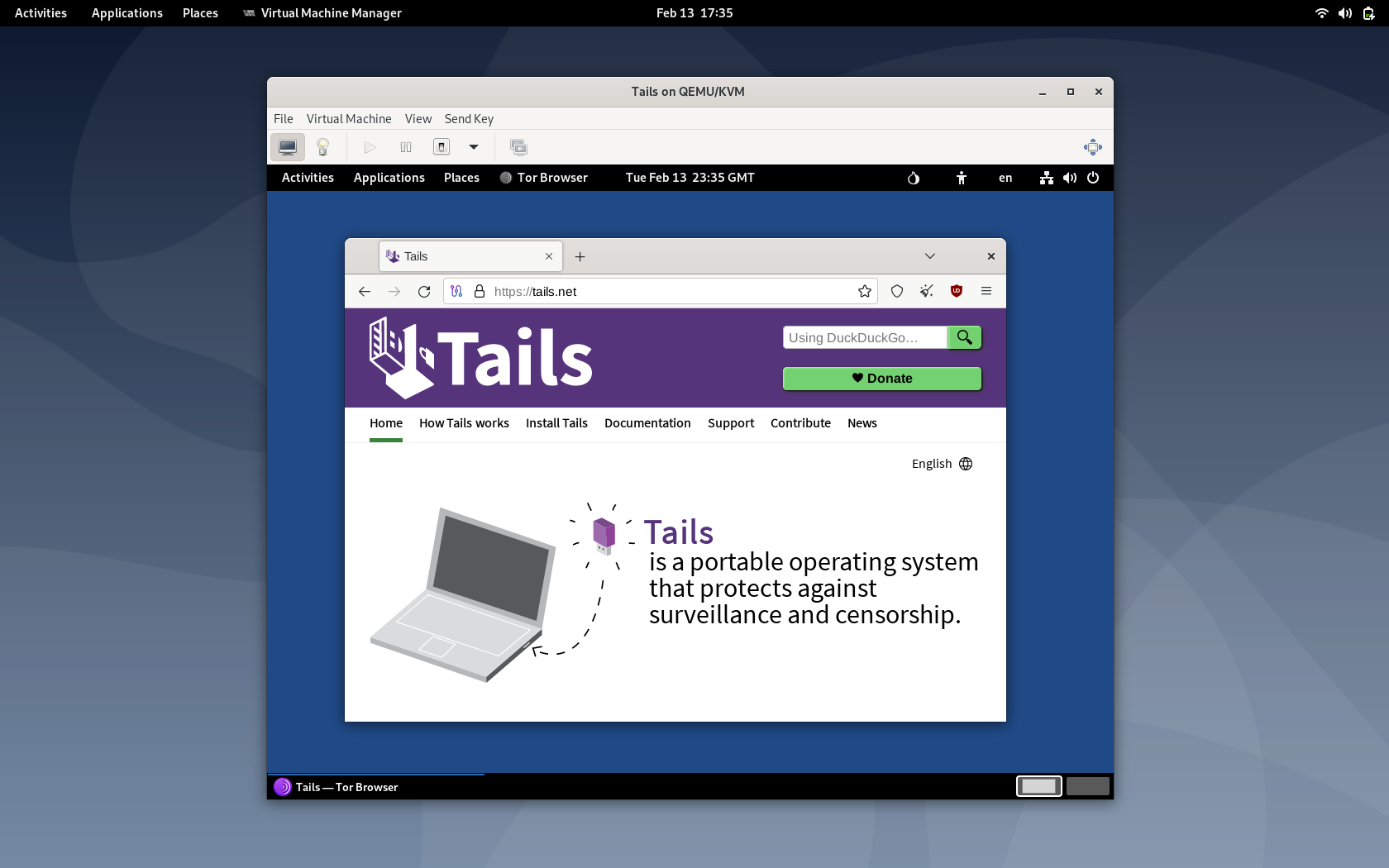A veces es conveniente poder usar Tails sin tener que reiniciar tu computadora cada vez. Esto se puede hacer usando máquinas virtuales.
With virtual machines, it is possible to run Tails inside a host operating system. A virtual machine emulates a real computer and its operating system, called a guest, which appears in a window on the host operating system.
Because, VirtualBox works pretty badly with Tails, we stopped advertising solutions for using virtual machines in Windows or macOS.
We only present below 2 solutions for Linux: GNOME Boxes and virt-manager.
Cuando se usa Tails en una máquina virtual, puedes usar la mayoría de las funcionalidades de Tails desde tu sistema operativo y, usar Tails y tu sistema operativo habitual en paralelo sin necesidad de reiniciar la computadora.
Por el momento no proveemos una solución para ejecutar una máquina virtual dentro de un anfitrión Tails.
This is how Tails looks when run in a virtual machine on a Debian host.
Consideraciones de seguridad
Running Tails inside a virtual machine has various security implications. Depending on the host operating system and your security needs, running Tails in a virtual machine might be dangerous.
Tanto el sistema operativo anfitrión como el software de virtualización son capaces de monitorizar lo que estás haciendo en Tails.
If the host operating system is compromised with a software keylogger or other malware, then it can break the security built into Tails.
Only run Tails in a virtual machine if both the host operating system and the virtualization software are trustworthy.
For example, when using virtual machines in Windows, Microsoft Recall might be taking regular screenshots of your activity.
Es posible que queden huellas de tu sesión de Tails en el disco duro local. Por ejemplo, el sistema operativo anfitrión normalmente usa espacio de intercambio (o paginado) que copia parte de la RAM al disco duro.
Only run Tails in a virtual machine if leaving traces on the hard disk is not a concern for you.
Por eso es que Tails te advierte que estás usando una máquina virtual.
The Tails virtual machine does not modify the behavior of the host operating system and the network traffic of the host is not anonymized. The MAC address of the computer is not modified by the MAC address anonymization feature of Tails when run in a virtual machine.
Soluciones de virtualización
To run Tails inside a virtual machine, you need to have virtualization software installed on the host operating system. Different virtualization software exists for Linux, Windows, and macOS. Unfortunately, we only know of virtualization solutions for Linux that work well with Tails.
We only mention Free Software, because we believe that it is a necessary condition to be trustworthy. Proprietary virtualization software exist, such as VMWare, but is not listed here on purpose.
GNOME Boxes is only available on Linux. It has a simpler user interface than virt-manager but does not allow to use a Persistent Storage.
virt-manager is only available on Linux. It has a more complex user interface than GNOME Boxes but allows to use a Persistent Storage, either by:
- Starting Tails from a USB stick.
- Creating a virtual USB storage volume saved as a single file on the host operating system.

